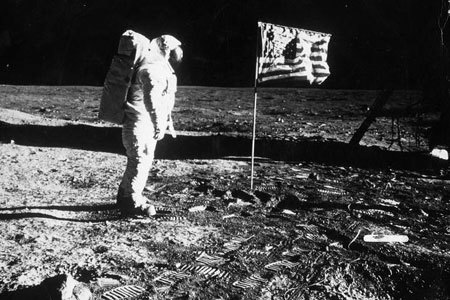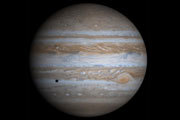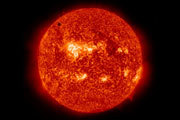On July 20, 1969, Neil Armstrong became the first human on the Moon when he stepped out of space shuttle Apollo 11, followed by fellow astronaut, Buzz Aldrin. Thirty-seven years later, we know a lot more about space and space exploration thanks to these original pioneers. Get the goods on the Moon right here!
The Moon - What It's All About
The Moon is the second brightest thing in our sky, after the Sun, and is the only extraterrestrial body to be visited by man. Once a month, the Moon rotates around the Earth every 27.3 days, which accounts for the Moon's various phases (quarter, half, full, etc.). The Moon's rotation plays a major role in the Earth's environment as well. Tides are greatly influenced by the Moon. As the Earth rotates on its axis, the Moon's gravitational pull draws the ocean toward it. So, when an ocean is closest to the Moon, it will be low tide and when a particular ocean is on the opposite side of the Earth from the Moon, it will be high tide.

The Moon - Did U Know?
- The Moon's orbit grows in size each year by approximately 1.5 inches. Astronomers believe that when the Moon was first formed it was approximately 14,000 miles (22,530 km) from Earth. Today, the Moon is 280,000 miles (450,000 km) from Earth.
- The last landing on the Moon was in December 1972.
- The footprints left by the Apollo 11 astronauts will not disappear for at least 10 million years because there is no wind or water on the Moon.
- It takes light from the Moon about a second and a half to reach Earth.
- The Moon is not a perfect sphere, but instead is shaped more like an egg!
- On the Moon, you would weigh six times less than you do on Earth because there is not as much gravity.
 Neil Armstrong was the first person to walk on the moon
Neil Armstrong was the first person to walk on the moon
Related Stories:
- Basics of Our Solar System
- Our Sun
- Planet Overview - Earth
- Space Term Glossary
- More About the Great Beyond...

































